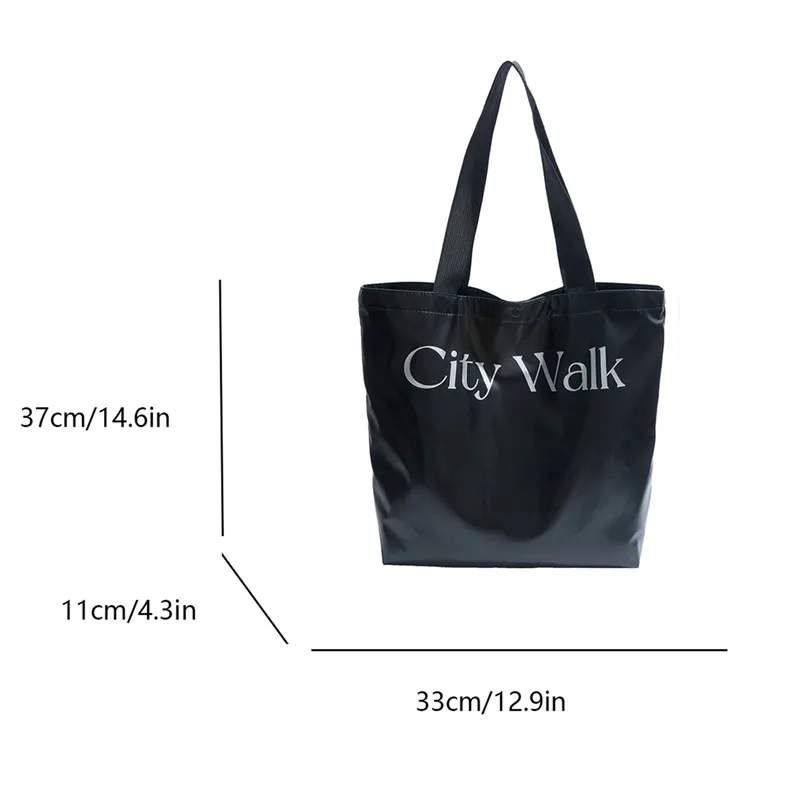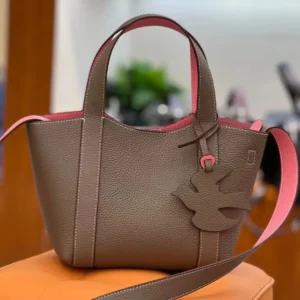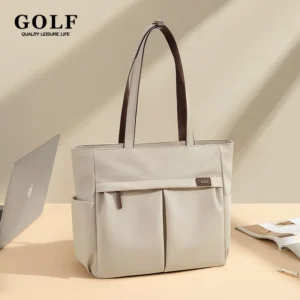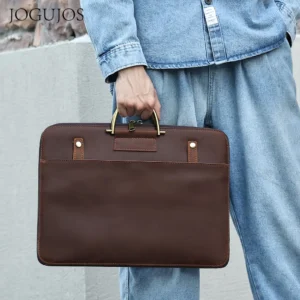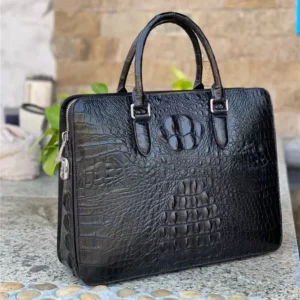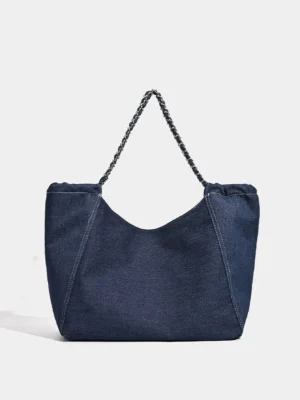Why Professional Document Organization Matters
Have you ever frantically searched through your bag for an important document minutes before a meeting? Or pulled out a crumpled contract that made you look unprepared? Document chaos isn’t just frustrating—it’s costing you valuable time and potentially damaging your professional image.
The benefits of organized file management are both immediate and long-term:
- Professionals spend an average of 4.3 hours per week searching for papers, which adds up to more than 200 hours annually
- Well-organized documents reduce stress levels and increase productivity by up to 30%
- Properly stored documents last longer, reducing replacement costs and information loss
- A methodical approach to paperwork management signals attention to detail to colleagues and clients
The good news is that organization isn’t an innate talent—it’s a skill that anyone can master with the right system. Effectively organizing documents in leather bags creates a portable system that keeps your professional life running smoothly, regardless of where work takes you.
Core Principles of Portable Document Management
Before diving into specific systems, understanding these five foundation principles will transform how you approach document organization in any bag:
Strategic Minimalism: Carry only what’s necessary for your immediate needs. Each document should earn its place in your bag through regular use or critical importance.
Systematic Categorization: Group similar documents together in a way that makes logical sense for your workflow. This might be by project, client, purpose, or urgency.
Prioritized Accessibility: Place frequently accessed items where they’re easiest to reach. Important but rarely used documents can occupy less accessible spaces.
Document Protection: Shield papers from damage through appropriate barriers against folding, moisture, and tearing. Consider security needs for confidential information.
Physical-Digital Integration: Maintain a cohesive system that bridges paper documents and their electronic counterparts, reducing duplication while ensuring access to information in either format.
These principles form the foundation for efficient document management across all professional scenarios, from courtroom appearances to client presentations to daily office work.
When mastering mobile office paperwork organization, these principles help you create systems that remain functional whether you’re at your desk or on the move.
The Professional Briefcase & Work Bag System
Professional settings demand a document organization system that balances comprehensiveness with accessibility. The ideal briefcase organization addresses three distinct document categories:
Essential Daily Documents
These papers need immediate access without searching:
– Meeting agendas and notes (current day only)
– Active project reports requiring review
– Business cards (both yours and recently collected ones)
Keep these items in the most accessible front compartment or dedicated quick-access pocket.
Project-Specific Materials
Group papers by project or client using:
– Colored folders with clear labels
– Tab dividers in a slim accordion file
– Document sleeves for materials requiring presentation
The main compartment of your briefcase should house these items, arranged either vertically or horizontally based on your bag design.
Administrative Paperwork
These supporting documents are important but rarely need immediate access:
– Expense receipts and reimbursement forms
– Reference materials and background information
– Archived notes from previous meetings
Place these in a secure inner pocket or rear compartment where they remain safe but don’t interfere with accessing priority documents.
Effective use of leather briefcase document compartments transforms how you interact with paperwork throughout your day. The right leather document bag already incorporates thoughtful design elements that support intuitive organization.
Effective Document Systems for Portfolio & Padfolio Carriers
For professionals who prefer a minimalist approach, portfolios and padfolios offer streamlined document management focused on meeting-specific needs. Their slimmer profile enforces discipline about what papers truly deserve to travel with you.
Meeting-Focused Organization
A portfolio system works best when organized around immediate meeting needs:
– Position meeting agendas and handouts in the main document sleeve
– Use the left interior pocket for documents you’ll distribute
– Reserve the right interior pocket for materials you’ll collect
– Keep note-taking materials and a slim notepad in the center
Presentation-Ready Structure
When using a padfolio for presentations:
– Arrange reference materials in order of anticipated use
– Use transparent pockets for documents that require quick visual scanning
– Place supporting data and backup materials in a separate section
– Keep business cards in dedicated slots for smooth networking transitions
The right organization system for portfolios maintains professionalism while eliminating bulk. The slim profile of slim leather portfolio briefcases works particularly well for client-facing roles where appearing organized is as important as actually being organized.
Document Management for Laptop Bags & Tech-Focused Carriers
Modern professionals often juggle both digital and physical documents, creating unique organizational challenges. The key is creating harmonious systems where paper and technology complement rather than compete with each other.
Physical-Digital Balance
For tech-focused bags, consider these organization strategies:
– Dedicate one section exclusively to paper documents, separated from electronic items
– Use waterproof document sleeves near areas that might house drinks or potentially leaky items
– Position printed materials that complement your digital presentations in easily accessible pockets
– Maintain a small dedicated space for papers that require physical signatures
Tech-Adjacent Organization
When papers must travel alongside electronics:
– Keep cables and small tech accessories in zippered pouches separate from documents
– Use rigid dividers to prevent papers from being crushed by heavier tech items
– Position documents away from heat-generating equipment
– Consider document sleeves with electromagnetic shielding for sensitive information
The right approach to choosing a leather laptop bag should include careful consideration of how its compartments support your document needs. Many professionals find that leather laptop work totes provide the perfect balance of document organization and technology accommodation.

Travel Document Organization Systems
Business travel introduces additional document organization challenges that require specialized systems.
Essential Travel Document Management
Create a dedicated travel document section containing:
– Passport, visa documentation, and identification
– Boarding passes and transportation tickets
– Hotel confirmations and reservations
– Emergency contact information and health insurance cards
These should always be stored in a secure, water-resistant compartment that remains accessible during transit without removing your bag from your person.
Destination Meeting Organization
For documents needed upon arrival:
– Separate materials by meeting or appointment in clearly labeled folders
– Position materials in chronological order based on your itinerary
– Include local contact information with each meeting’s documents
– Keep a master itinerary at the front of this section for quick reference
Expense Management On-The-Go
Create a dedicated system for financial documentation:
– Include a slim envelope or zippered pouch specifically for collecting receipts
– Maintain a running expense log at the front of this section
– Segregate receipts by category or day for easier processing later
– Take photos of physical receipts immediately as backup
Following thoughtful document storage tips for leather bags helps ensure your travel experience remains stress-free while protecting important papers from the rigors of transportation.
Premium Organizational Tools for Leather Goods
The right organizational accessories elevate both functionality and aesthetics when managing documents in premium bags.
Document Sleeves and Portfolios
Select accessories that complement fine leather with:
– Matching or complementary leather finishes
– Reinforced edges that protect documents without adding bulk
– Non-abrasive interiors that won’t damage important papers
– Professional colorways that maintain executive aesthetics
Specialized Inserts and Dividers
Quality organizational tools should feature:
– Rigid yet lightweight materials that maintain their structure
– Precisely sized dimensions that maximize your bag’s interior space
– Thoughtfully positioned pockets appropriate for standard document sizes
– Materials that won’t mark or damage the interior of your leather bag
These premium organization solutions pair particularly well with classic leather briefcases where quality and functionality must coexist seamlessly.
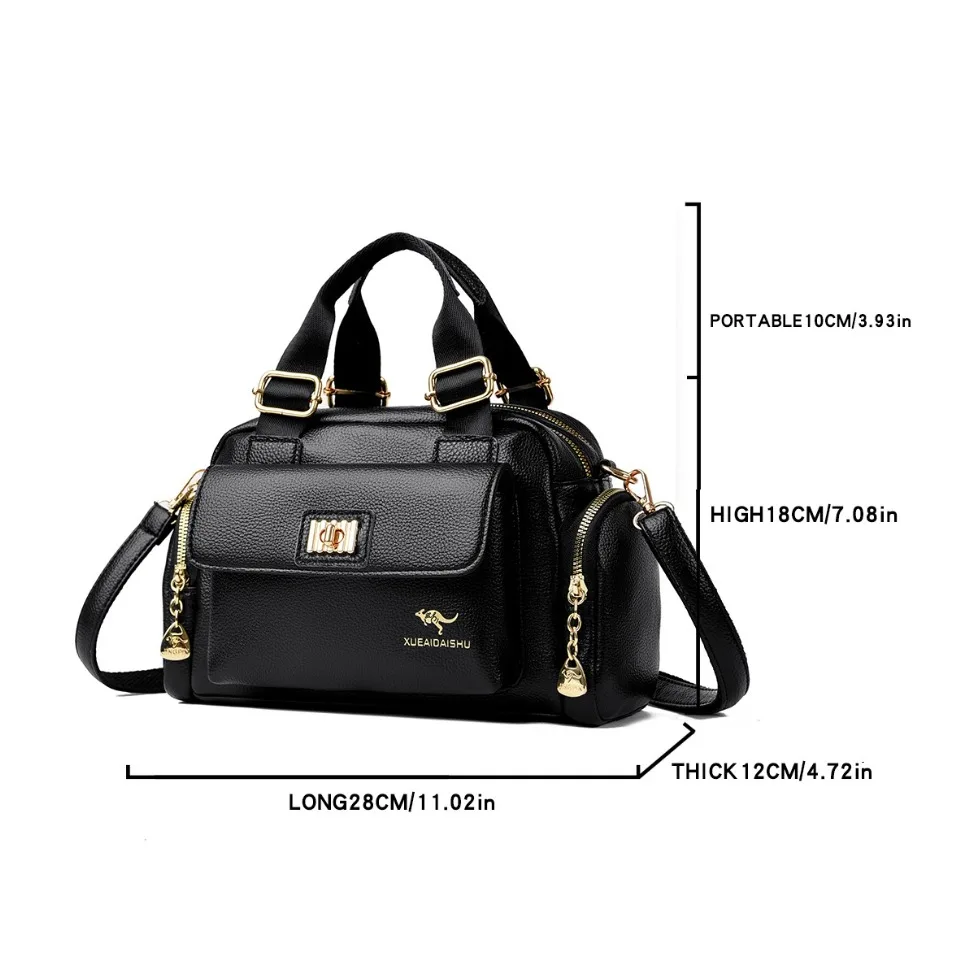
Men's Classic Leather Briefcase, Slim Leather Laptop Briefcase, Slim Leather Portfolio Briefcase
$93.67 Select options This product has multiple variants. The options may be chosen on the product pageBrown Leather Work Tote, Large Leather Work Tote
$194.38 Select options This product has multiple variants. The options may be chosen on the product pageLeather Laptop Work Tote, Tan Leather Work Tote, Women's Leather Work Tote, Zippered Leather Work Tote
Price range: $223.62 through $237.97 Select options This product has multiple variants. The options may be chosen on the product pageClassic Laptop Briefcase, Men's Classic Leather Briefcase, Slim Leather Attache Case
Price range: $353.50 through $360.81 Select options This product has multiple variants. The options may be chosen on the product pageBlack Leather Briefcase, Leather Document Bag, Men's Classic Leather Briefcase
Genuine Crocodile Leather Executive Briefcase with Password Lock – Premium Business Document Carrier$1,201.87 Select options This product has multiple variants. The options may be chosen on the product pageCanvas & Leather Messenger Bag, Leather Commuter Tote
$80.41 Select options This product has multiple variants. The options may be chosen on the product page
Practical Document Management Habits for Professionals
Even the best organizational system requires maintenance habits to remain functional over time.
Daily Maintenance Routine
Implement this 5-minute end-of-day system:
1. Remove all documents from your bag
2. Sort into “keep” vs. “remove” categories
3. File or discard items that have served their purpose
4. Reorganize remaining documents according to your system
5. Prepare and add any documents needed for tomorrow
Weekly Reset Procedure
Once weekly, perform a deeper organization:
1. Empty all compartments completely
2. Wipe down interior surfaces
3. Evaluate if your organizational system is still meeting your needs
4. Replace any damaged organizational tools
5. Reorganize according to upcoming week’s priorities
Consistently well organized leather briefcases for work environments reflect these maintenance habits rather than one-time organization efforts.
Is Paper Still Relevant? Balancing Physical and Digital Documents
Despite the digital revolution, paper documents remain important in many professional contexts. The key is understanding when each format serves your needs best.
When Physical Documents Make Sense
Paper remains superior in these scenarios:
– Formal contracts and legal documents requiring original signatures
– Situations where digital devices might be inappropriate or distracting
– Materials that benefit from physical annotation or markup
– Presentations where passing documents creates engagement
– Environments where digital security concerns exist
Creating an Integrated System
To balance paper and digital effectively:
– Maintain a consistent naming convention across both formats
– Create digital backups of critical physical documents
– Use cloud storage that synchronizes across your devices
– Consider apps specifically designed for document organization
– Develop clear rules about which format serves as the “master” for each document type
Physical document security should be considered alongside digital protection, as outlined in best practices for securing both tech gear and documents in professional settings.
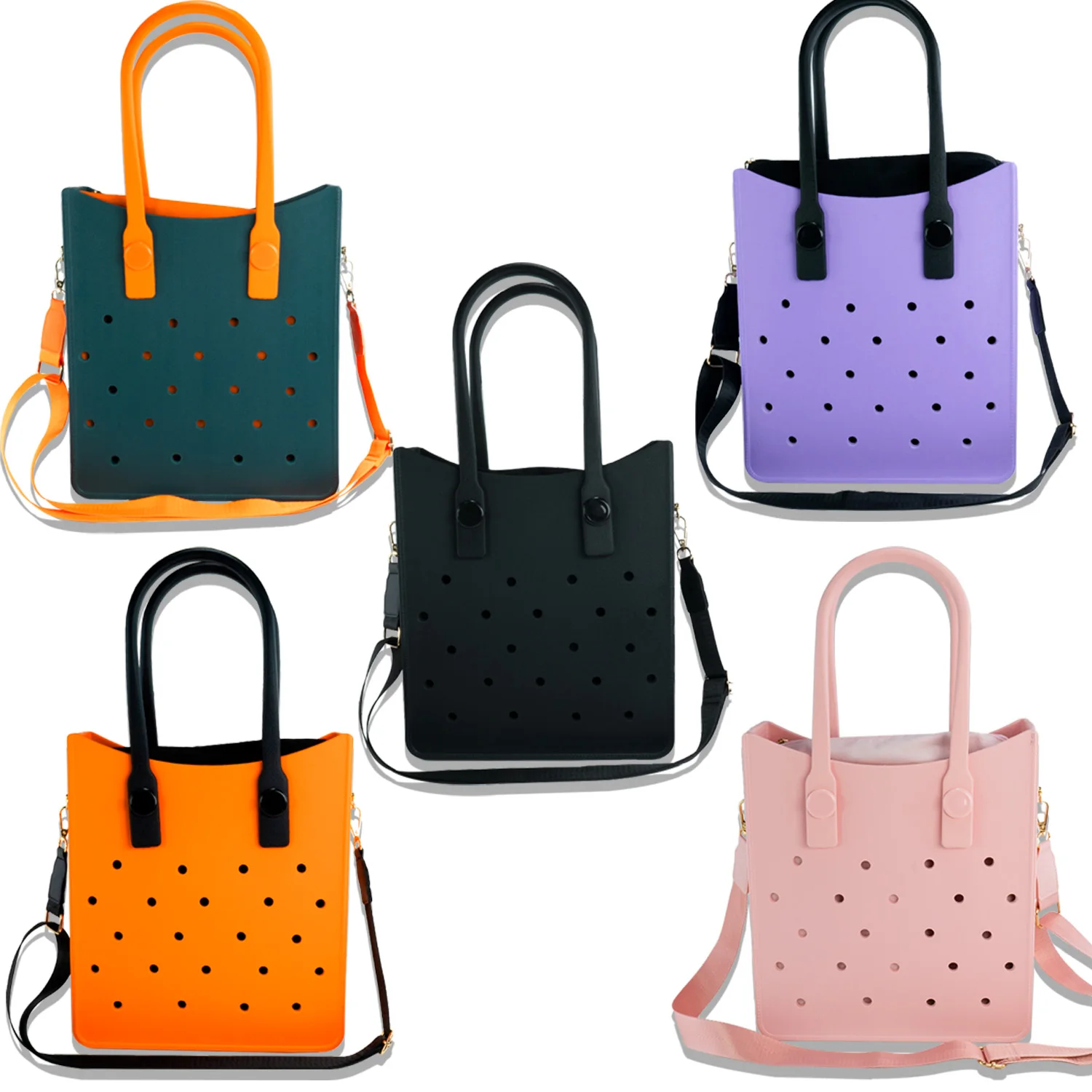
Creating Your Custom Document Organization Strategy
Your ideal document organization system should reflect your specific professional needs rather than following a one-size-fits-all approach.
Personalization Assessment
Ask yourself these questions to customize your system:
– What types of documents do I handle most frequently?
– Which documents create the most stress when I can’t find them quickly?
– How often do I transition between different workspaces?
– What are my most common document-related frustrations?
– Which current organization methods are working well for me?
Implementation Steps
- Start with a clean slate by removing all documents from your bag
- Sort everything into categories that make sense for your workflow
- Select appropriate organizational tools based on your document types
- Implement your system gradually, focusing first on high-priority documents
- Evaluate after two weeks and make adjustments as needed
Your organization system should evolve as your professional needs change. Many professionals find that leather work totes provide flexible organization options that adapt to changing document needs across various career stages.
How Does Document Organization Impact Professional Perception?
The way you manage documents sends subtle but powerful signals about your professional capabilities. Research shows that organization significantly impacts how others perceive your competence:
- Well-organized professionals are rated 28% higher in perceived competence by colleagues
- The ability to quickly retrieve specific information during meetings correlates with higher leadership evaluations
- Physical organization has been shown to create a “halo effect” that positively influences perceptions of other professional qualities
- Different industries maintain varying expectations about document presentation, with legal, financial, and consulting fields holding particularly high standards
When you pull a crisp, unwrinkled document from the appropriate section of your bag without hesitation, you’re not just being efficient—you’re making a statement about your attention to detail and respect for your profession.
Are Specialized Bag Inserts Worth the Investment?
When considering specialized organizational tools, evaluate these factors:
Pros:
– Purpose-built inserts maximize your bag’s organizational potential
– Quality dividers prevent document damage from shifting or folding
– Specialized tools often include features designed specifically for document protection
– Premium materials complement and protect your bag’s interior
Cons:
– Quality organizational tools represent an additional investment
– Some generic options might not fit perfectly in your specific bag
– Overly complicated systems can actually reduce efficiency
– Specialized tools often can’t be transferred between different bag styles
The value proposition typically depends on your document volume and professional image requirements. For most professionals carrying documents daily, quality organizational tools pay dividends through time savings and document preservation that justify their cost within weeks.
Where Should You Keep Digital Document Backups?
A comprehensive document management system includes thoughtful digital backups:
- Cloud Storage Options: Services like Dropbox, Google Drive, or Microsoft OneDrive provide access from anywhere but require internet connectivity
- Local Storage Solutions: External hard drives or USB drives offer physical control but can be lost or damaged
- Hybrid Approaches: Critical documents benefit from redundant storage across multiple formats
- Security Considerations: Encrypted storage should be standard for confidential professional documents
The ideal backup solution aligns with how you access and use your documents. Many professionals find that scanning physical documents upon receipt creates a searchable digital archive that complements their physical organization system while providing peace of mind against loss or damage.

